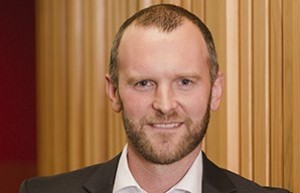House prices ramping up nationwide
Following heightened interest in and around the national housing market, CoreLogic has, for the first time, created a mid-year analysis of suburb-level property data.
Thursday, June 17th 2021, 11:55AM

The data reveals the market upswing has not been Auckland or main centre-focused, rather it has been broad-based right across the country.
Herne Bay remains New Zealand’s most expensive suburb, with a median value of $3.16 million, but in terms of value growth, cheaper areas have been far superior.
Reflecting better relative affordability and easier access for a wider range of buyers, Manunui in Ruapehu District saw median values rise by 51.8% in the past year to $295,000.
A “provincial” suburb has also taken the prize as fastest-selling with Hargest in Invercargill boasting a median selling time over the past year of just six days.
Provisionally, the top sale so far in 2021 has been 16 Audrey Road, Takapuna for $13.7 million.
CoreLogic chief property economist Kelvin Davidson says many suburbs within the main centres have also experienced strong growth.
Median values in Ōtara, Auckland are up by 31.4% over the past year, Enderley, Hamilton also cracked 30%, and Wainuiomata, Wellington hit 35.3% growth.
The top growth suburbs in Tauranga, Christchurch, and Dunedin were all in the range of 20% to 25%.
“Buyers shouldn’t despair, however. CoreLogic’s data also shows a number of suburbs in Christchurch with median property values less than $400,000, consistent with other indicators of the country’s second city’s relative affordability and potential appeal for those thinking of relocating.”
The cheapest suburb across the entire country is Runanga in the Grey District, with a median value of only $167,000, while some suburbs or small towns across the lower South Island have had increases of less than 5% in the past 12 months – including Wallacetown in Southland, Frankton in Queenstown, Twizel and Te Ānau.
When it comes to the speed of sale, single-digit days on market have been common for many parts of the country.
For example, suburbs in Invercargill, Nelson, Hamilton, Upper Hutt and Gore have all had median days on the market of fewer than 10 over the past year, while even in the main centres, property has generally been shifting in two to three weeks.
The longest time on market across most of the main centres has only been four to five weeks.
A look outside the main centres
CoreLogic’s review of activity in provincial New Zealand confirms the widespread nature of the latest property market upturn.
In terms of the highest median values, the Rest of South Island (RoSI) top 10 is dominated by Queenstown, with Kelvin Heights on top at $2.03 million.
The Rest of North Island (RoNI) top 10 features suburbs in Thames-Coromandel – eg Hahei at $1.34 million – Western Bay of Plenty, and Napier.
By contrast, the West Coast and Southland feature in terms of the RoSI’s areas with the lowest median values, while South Taranaki, Ruapehu, and Far North feature for RoNI.
Looking at the strongest growth around the provinces, a number of suburbs in Ruapehu and Gisborne have had median values increase by 40% or more in the past 12 months.
And although the overall gains have been slower across RoSI markets, Cobden in Grey District has headed the field at 25.1%, followed by a number of suburbs across Invercargill and Marlborough.
Suburbs that have lagged a little include Tinopai in Kaipara at a 2.4% rise and Wallacetown in Southland at 0.6%.
In terms of shortest time on market, the RoSI top 10 is dominated by parts of Nelson and Invercargill, such as Marybank and Hargest at six days each.
Across RoNI, three of the top 10 are represented by suburbs in Palmerston North, including Ashhurst, Takaro and Westbrook, all with median time to sell over the past year of just eight days.
Looking at slower-moving suburbs, the Far North features for RoNI and parts of Buller and Southland for RoSI.
For top sales, the RoSI top 10 is again dominated by Queenstown, although Tasman also makes an entry. For the RoNI, it’s no surprise to see Havelock North feature, along with Kāpiti Coast, Thames-Coromandel, Waikato and Waipā.
Davidson says it’s been a hectic first half of the year for the property market, but nothing lasts forever.
“We have been expecting a slowdown in both sales volumes and property value growth in the second half of 2021 and into 2022, and that remains on track – especially now that fixed mortgage rates, or those on longer terms, are rising.
“In other words, it looks likely the market is now close to, or at, the peak of this upswing.
“That said, with population growth having generally outpaced property supply increases over a period of several years, we’re anticipating a slowdown, not an outright downturn.”
| « Housing sales drop, prices race ahead | Trade-ups out of reach for many » |
Special Offers
Comments from our readers
No comments yet
Sign In to add your comment
| Printable version | Email to a friend |


